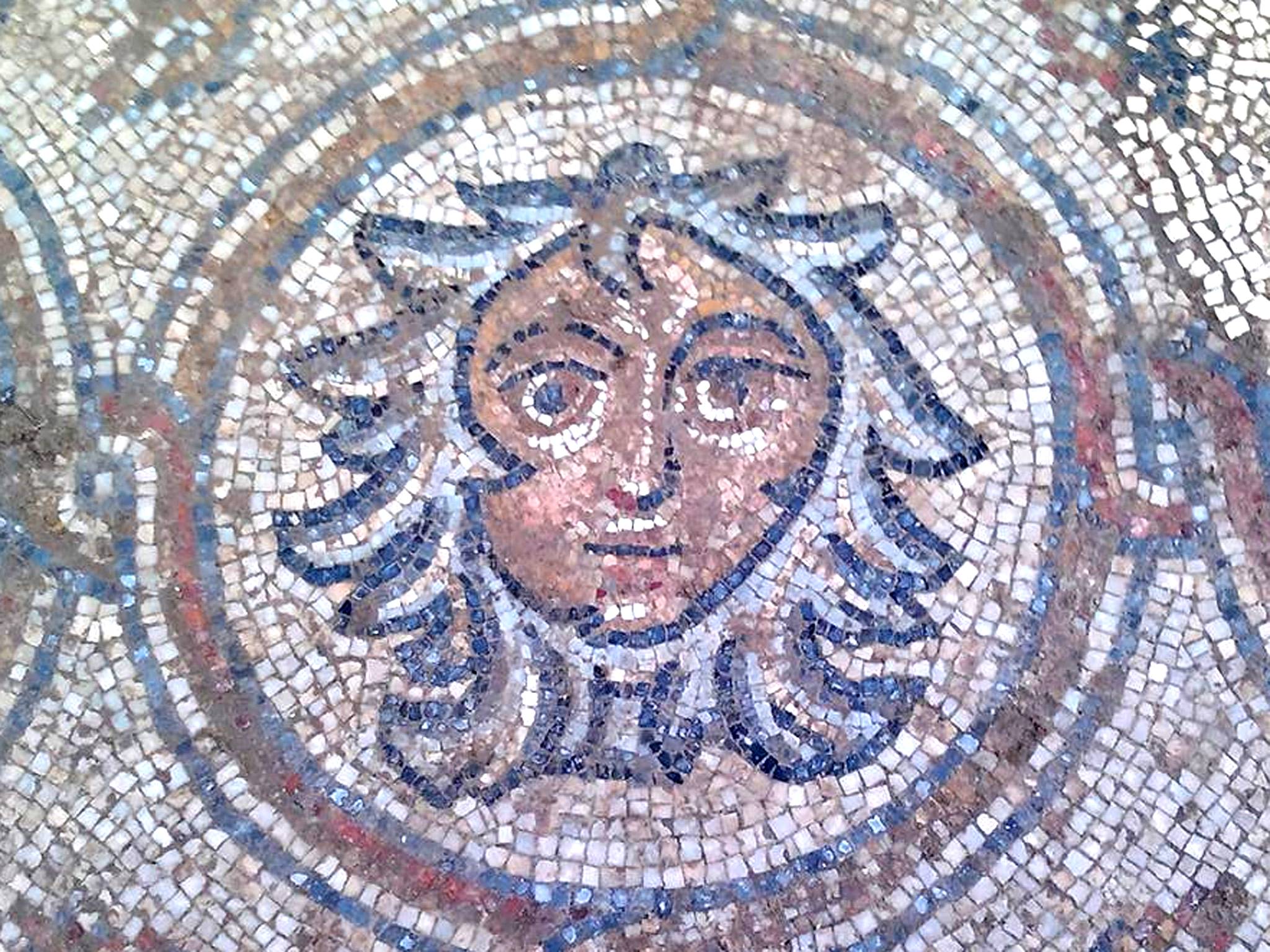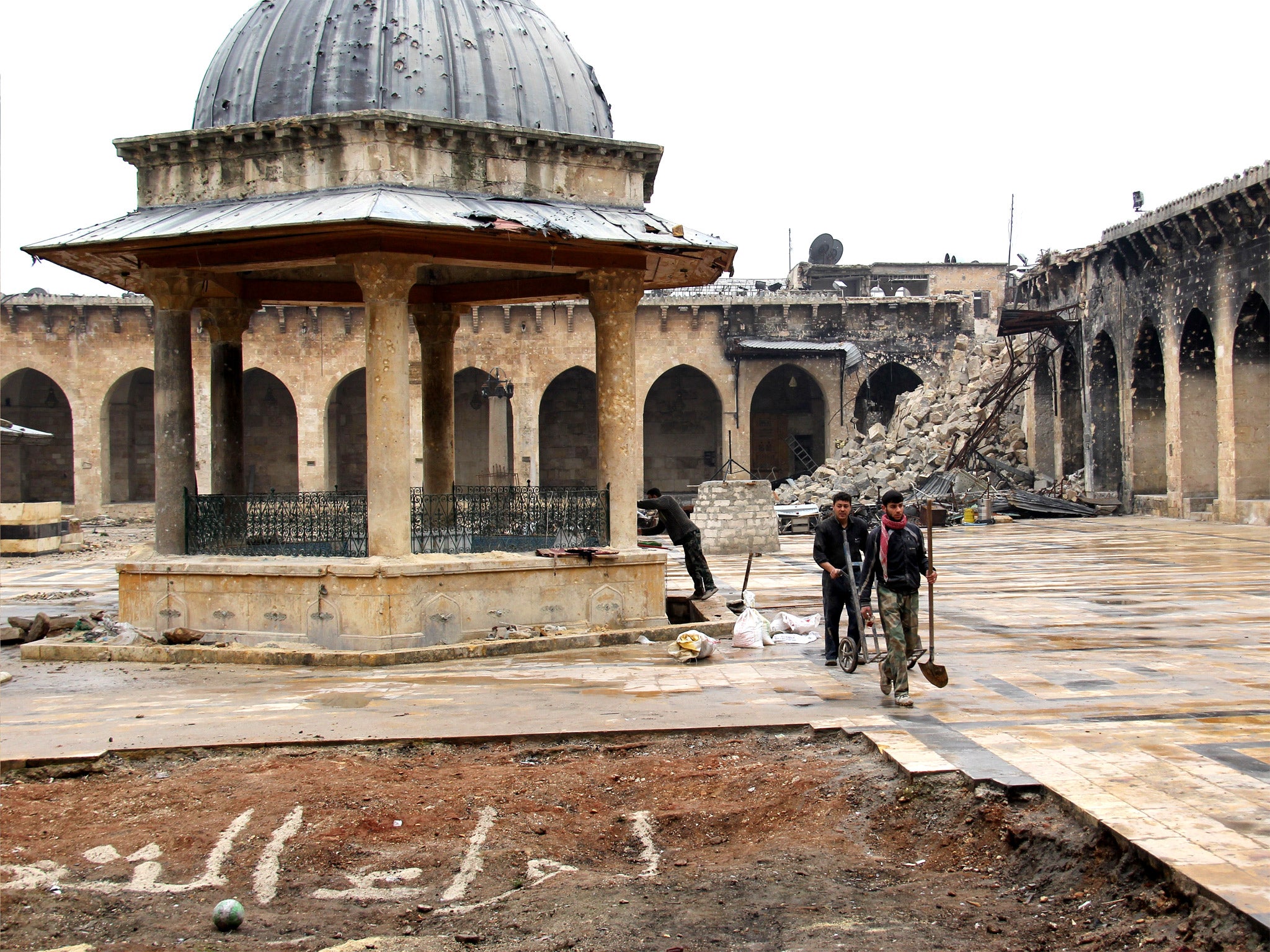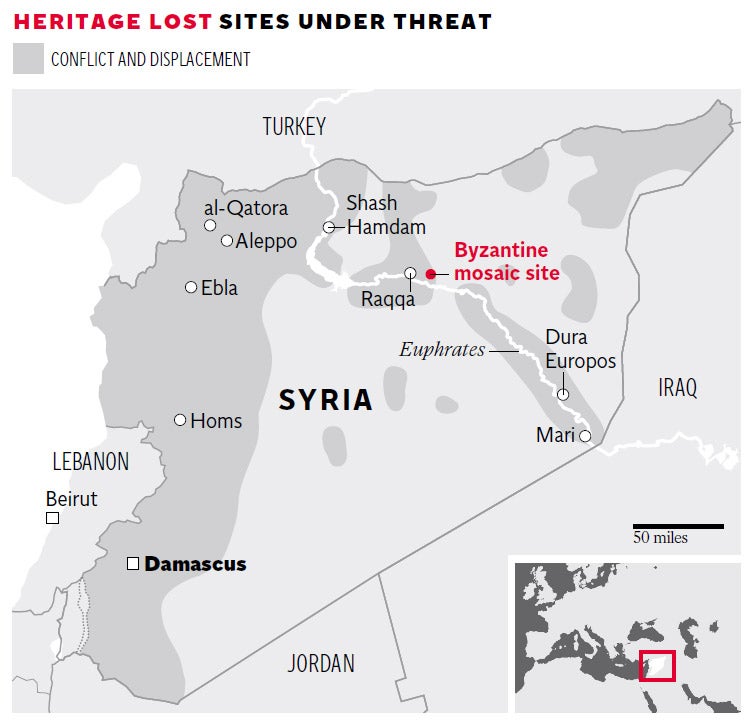The destruction of the idols: Syria’s patrimony at risk from extremists
The country’s wealth of archaeological treasures is under threat both from iconoclastic Islamic fundamentalists and looters operating amid the lawlessness of war

Islamic fundamentalists in Syria have started to destroy archaeological treasures such as Byzantine mosaics and Greek and Roman statues because their portrayal of human beings is contrary to their religious beliefs. The systematic destruction of antiquities may be the worst disaster to ancient monuments since the Taliban in Afghanistan dynamited the giant statues of Buddha at Bamiyan in 2001 for similar ideological reasons.
In mid-January the Islamic State of Iraq and the Levant (Isis), an al-Qa’ida-type movement controlling much of north-east Syria, blew up and destroyed a sixth-century Byzantine mosaic near the city of Raqqa on the Euphrates. The official head of antiquities for Raqqa province, who has fled to Damascus and does not want his name published, told The Independent: “It happened between 12 and 15 days ago. A Turkish businessman had come to Raqqa to try to buy the mosaic. This alerted them [Isis] to its existence and they came and blew it up. It is completely lost.”
Other sites destroyed by Islamic fundamentalists include the reliefs carved at the Shash Hamdan, a Roman cemetery in Aleppo province. Also in the Aleppo countryside, statues carved out of the sides of a valley at al-Qatora have been deliberately targeted by gunfire and smashed into fragments.
Professor Maamoun Abdulkarim, general director of antiquities and museums at the Ministry of Culture in Damascus, says that extreme Islamic iconoclasm puts many antiquities at risk. An expert on the Roman and early Christian periods in Syria, he says: “I am sure that if the crisis continues in Syria we shall have the destruction of all the crosses from the early Christian world, mosaics with mythological figures and thousands of Greek and Roman statues.”
Of the mosaic at Raqqa, discovered in 2007, he says: “It is really important because it was undamaged and is from the Byzantine period but employs Roman techniques.”
Syria has far more surviving archaeological sites and ancient monuments than almost any country in the world. These range from the Umayyad Mosque in Damascus with its magnificent eighth-century mosaics to the Bronze Age Ebla in Idlib province in north-west Syria, which flourished in the third and second millennia BC and where 20,000 cuneiform tablets were discovered. In eastern Syria on the upper Euphrates are the remains of the Dura-Europos, a Hellenistic city called “the Pompeii of the Syrian desert” where frescoes were found in an early synagogue. Not far away, close to the border with Iraq, are the remains of Mari, which has a unique example of a third-millennium BC royal palace.
Unfortunately, many of the most famous ancient sites in Syria are now held by the fundamentalist Islamic opposition and are thereby in danger. Professor Abdulkarim says that it is not just Isis but “Jabhat al-Nusra [the official affiliate of al-Qa’ida] and the other fundamentalists who are pretty much the same”.
He emphasises at the same time that he approaches his job of trying to preserve Syria’s heritage during the civil war from a politically neutral point of view. The civil war has inflicted heavy damage, notably in Aleppo, where the minaret of the Great Umayyad Mosque was destroyed along with seven medieval souks, or markets, with over 1,000 traditional shops burnt out.

Homs Old City has suffered serious damage and is still held by the rebels, while the immense Crusader fortress of Krak des Chevaliers has been battered by government air strikes. The great church at St Simeon has been turned into a military training area and artillery range by rebels.
Syria’s museums are generally secure and moveable items have been taken elsewhere for safe-keeping. Museum staff say they saw what happened in Iraq after 2003 and moved quickly. A folk museum at Deir Atieh between Damascus and Homs was taken over, but the rebels were after old pistols and rifles on display that they intended to put to military use.
The most devastating and irreversible losses to Syria’s rich heritage of ancient cities and buildings are the result of looting. Much of this is local people looking for treasure, though in many cases they are obliterating the archaeological record by using bulldozers. Two looters were killed when they used a bulldozer to excavate a cave at Ebla, causing its roof to collapse.
What worries Professor Abdulkarim and his staff is that over the last year the looting has become large scale. He says that there is “a mafia from Turkey, Iraq and Lebanon hiring hundreds of people to strip sites”. Among what are known as the Dead Cities in Idlib province in northern Syria, once prosperous and then mysteriously abandoned 1,000 years ago, there are signs that thieves have brought in antiquities experts to advise them about the best places to dig, going by the orderly nature of the excavations.
Theft of antiquities is particularly bad in the far east of Syria at Mari where an armed gang numbering 500 has taken over the site. An official report says that the looters have been focusing on “the Royal Palace, the southern gate, the public baths, Temple of Ishtar, the Temple of Dagan and the temple of the Goddess of Spring”.
Even worse is the situation at Dura-Europos where 300 people are excavating. A report by the Directorate-General of Antiquities and Museums says that efforts by local communities to stop the digging here have failed and heavy machinery is being used. The report says that illegal excavations have “led to the destruction of 80 per cent of the site as perpetrators are digging holes that can reach three metres in depth”.

For some Syrians, often well-armed in war-ravaged, impoverished areas, the looting of antiquities has become a full-time job. In great stretches of the country outside state control there is total disorder with banditry and kidnapping common. Rebel commanders, even if they wanted to, are not going to give priority to protecting ancient monuments.
Professor Abdulkarim complains that he has received little international help in preventing the looting of Syria’s rich heritage. The deliberate targeting by Isis and other jihadist groups of mosaics and statues seen as profane will accelerate the speed of destruction. Antiquities that have survived invasions and wars for 5,000 years may soon be rubble.
Join our commenting forum
Join thought-provoking conversations, follow other Independent readers and see their replies
Comments